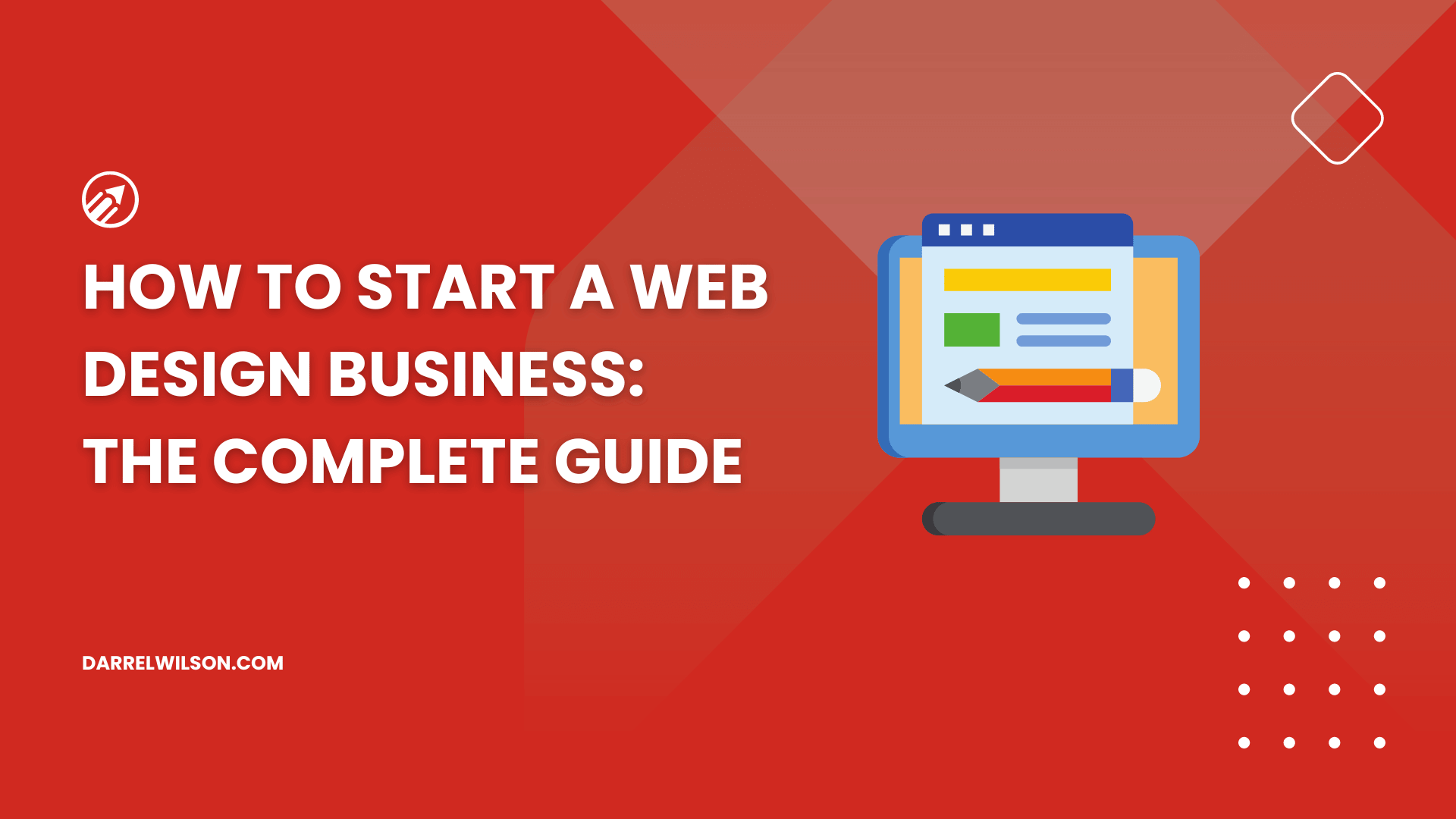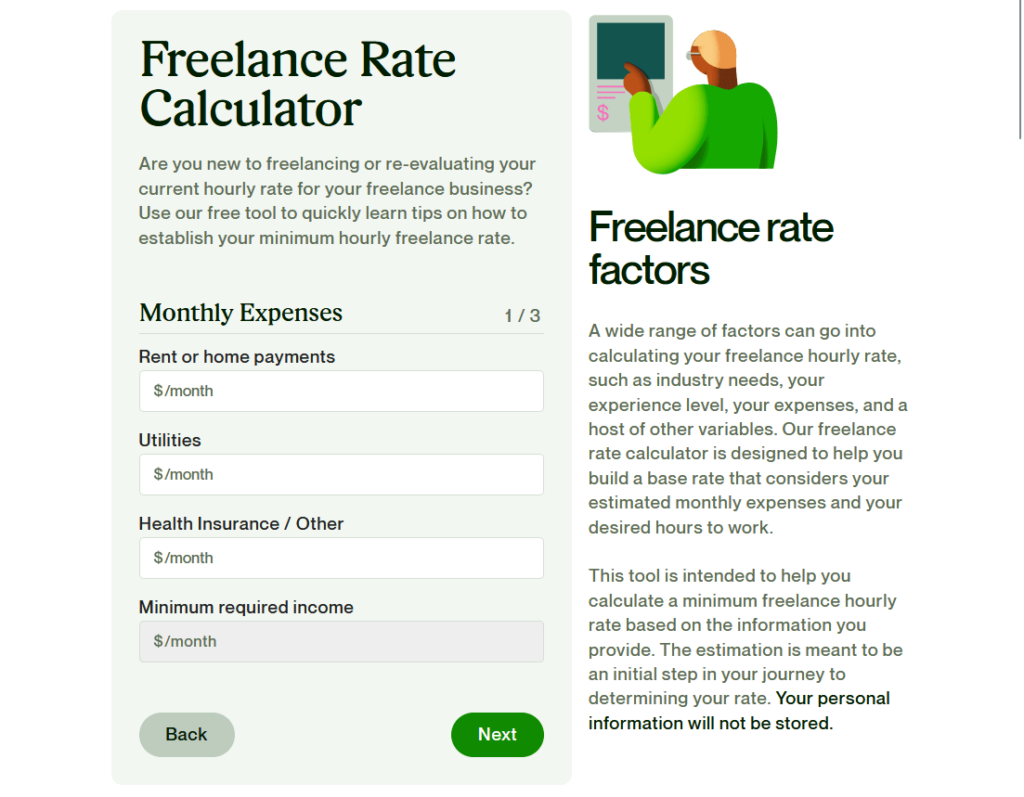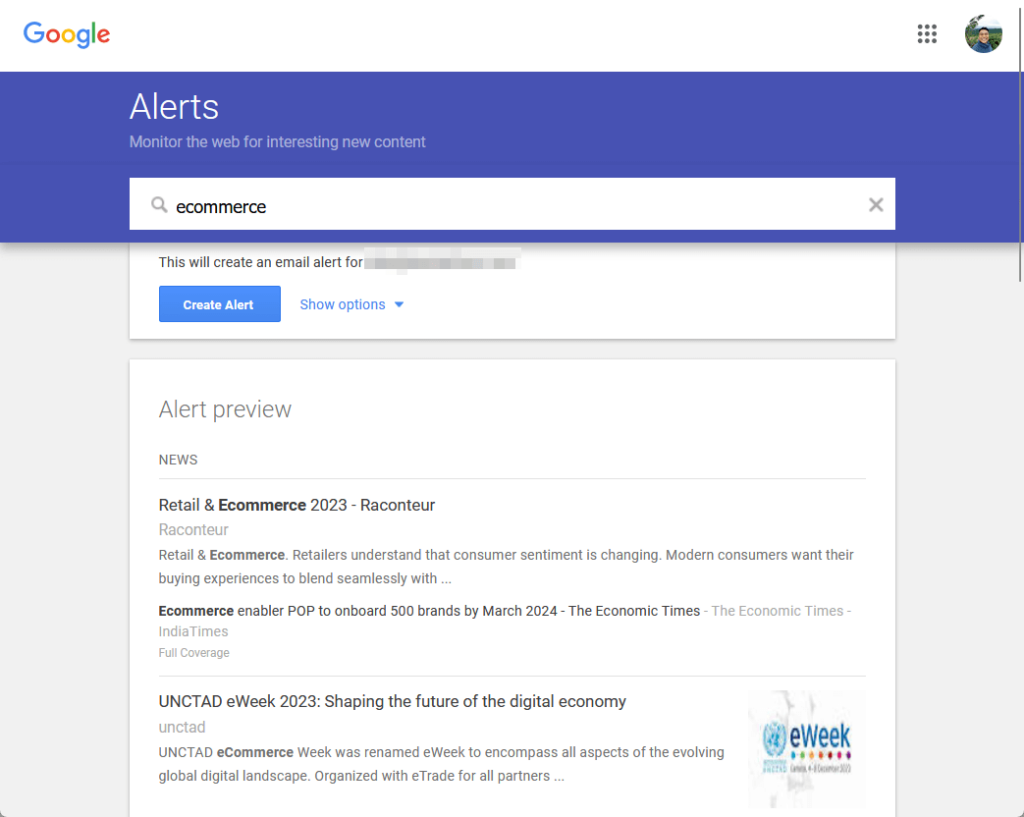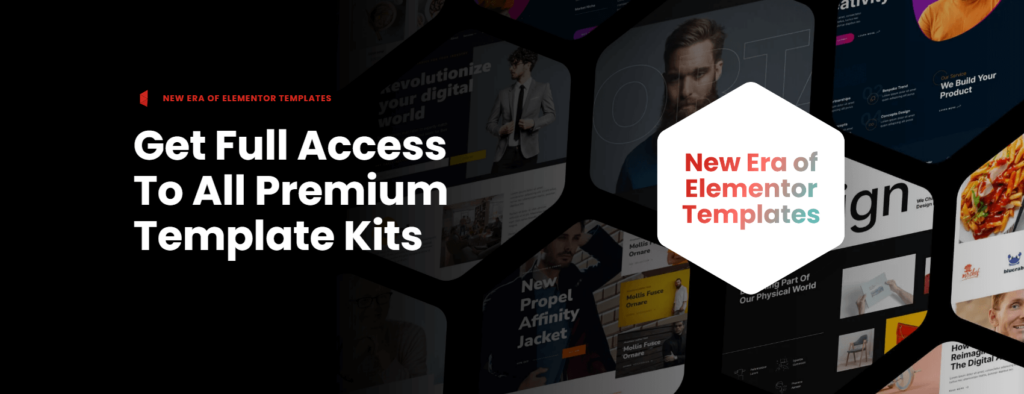


Thinking of starting your own web design business?
By the end of this guide, you will learn strategies and tools needed to launch and grow a successful web design business.
Here are the contents:
Let’s get started!
Starting a web design business can be rewarding and lucrative for those with a passion for design and a keen eye for detail.
Here are some of the benefits of starting your own web design business:
Starting a web design business opens up a world of possibilities.
It’s a profession that offers creativity, flexibility, financial rewards, and the opportunity to constantly grow and adapt in an ever-changing digital landscape.
Starting a web design business is an exciting venture for anyone passionate about digital creativity and entrepreneurship.
However, the journey from a concept to a successful business requires careful planning and strategic actions.
Here’s a step-by-step guide to help you launch your web design business:
A niche is a specialized segment of the market where you can focus your skills and services.
Choosing a niche allows you to become an expert in a specific area, making it easier to differentiate yourself from competitors and attract a targeted client base.
It helps in several ways:
🔎 Examples of potential niches
There are numerous niches within web design, each catering to different interests and markets.
Some examples include:
When it comes to selecting a niche for your web design company, it’s important to make a well-informed decision that balances your personal preferences with market realities.
Here’s how to expand on the key considerations:
1. Your interests and skills
Your chosen niche should be an area you are genuinely interested in and passionate about. This passion will keep you motivated, especially during challenging times.
Additionally, consider your existing skills and strengths:
Aligning your niche with your skills ensures that you can offer high-quality services and enjoy the work you do.
2. Market demand
Before settling on a niche, conduct thorough market research to understand the demand for different types of web design services.
This involves:
For instance, if you notice a growing number of small businesses in your area without a web presence, this could signify a ripe opportunity.
Analyzing market trends and future growth potential is also important — for example, ecommerce and mobile-responsive design are areas with increasing demand.
3. Competition
It’s important to assess the level of competition within your potential niche:
A niche with fewer competitors may offer more opportunities but also consider the level of expertise required.
If you choose a highly competitive niche, think about how you can differentiate your services:
Analyzing your competitors can also provide insights into successful business strategies and common pitfalls to avoid.
4. Future potential
Consider the long-term prospects of the niche:
For example, selecting sustainable or accessible web design could offer growth potential due to the rising global emphasis on inclusivity and the environment.
Balancing these factors helps in choosing a niche that is not only personally fulfilling but also commercially viable.
Once you’ve identified your niche, it becomes easier to tailor your services, refine your marketing strategy, and build a portfolio that appeals directly to your target market.
⚠️ Note: The niche you choose can evolve as your business grows and as market trends change, so it’s important to remain flexible and adaptive.
Always remember the foundation of any successful online venture – reliable web hosting.
This is where Hostinger steps in, offering affordable yet powerful hosting solutions tailored for web designers and their clients.

Discover the Hostinger advantage for your WordPress site:
By choosing Hostinger, you’re not just selecting a web host:
You’re setting up your business for success with a platform that guarantees performance, reliability, and outstanding customer support.
After choosing your niche, the next step in establishing your web design business is to decide on the range of services you will offer.
This decision defines your work, and client expectations — and shapes your business model and marketing strategy.
Here’s how to approach this:
🎯 Determine the range of design services to provide
Some businesses focus solely on designing the website’s visual aspects, while others may offer full-stack development, including back-end coding.
Common services include:
Web design services can vary — your decision should be based on your skills, interests, and the needs of your target market.
When deciding on the range of services to offer in your web design business, align them with your capabilities and market dynamics.
Here are the things you need to consider:
1. Your expertise
Your service offerings should be a reflection of your strengths and areas where you can deliver the highest quality of work.
Ask yourself:
2. Market needs
Understanding the specific requirements of your target market ensures that your services meet the actual demands.
Consider:
3. Scalability
As your business grows, your service offerings should be able to scale accordingly.
Reflect on:
4. Complementary services
Offering services that complement each other can add value to your clients and create additional revenue streams.
Think about:
Choosing the right mix of services is important in attracting the right clients and building a successful business.
Being clear and strategic about what you offer will aid in marketing your business effectively and establishing your brand in the market.
Pricing is crucial for your web design business, as it not only affects your profitability but also how potential clients perceive the value of your services
Setting the right prices requires a balance between being competitive, covering your costs, and achieving your desired profit margins.
When determining your pricing structure, consider the following factors:
| Factor | Description | Action (What to Do) |
| Costs and expenses | Calculate overhead business expenses, including software subscriptions, hardware, office space (if any), and outsourced services. | Ensure rates cover expenses and leave room for profitability. |
| Market rates | Research rates charged by web designers in your niche. | Position your pricing competitively within the market. Find the right balance to attract clients effectively. |
| Value of your services | Consider your expertise, specialized skills, and potential ROI for clients’ businesses. | Emphasize the unique value you offer to justify higher rates and attract quality-focused clients. |
These factors can help you set a pricing structure that aligns with costs, market expectations, and your service’s value.
This strategic approach to pricing can contribute to the success and sustainability of your web design business.
When it comes to establishing competitive pricing in the web design market, it’s important to recognize that pricing strategy goes beyond simply assigning a number.
Here are some strategies to consider:
| Strategy | Description | Example |
| Tiered pricing models | Offer different pricing tiers based on the complexity and scope of the work. Accommodates a wider range of clients. | Basic tier: 5-page website, standard tier: 10-page website, premium tier: ecommerce site with advanced features. |
| Project-based pricing | Set prices per project instead of hourly rates, providing clients with a clear, upfront budget. | Website redesign: $2,500, ecommerce site development: $5,000, landing page creation: $750. |
| Value-based pricing | Align fees with the value or ROI your designs deliver, especially in cases like e-commerce sites boosting sales. | 10% of additional annual sales generated by an ecommerce website, or a fixed fee based on projected ROI. |
| Hourly rates | Charge clients based on the hours worked, suitable for smaller projects or ongoing maintenance. | $75 per hour for website updates, $100 per hour for graphic design work, and $50 per hour for content updates. |
| Retainer agreements | Offer ongoing support through monthly retainers, ensuring a steady income while providing consistent client service. | Monthly retainer for website maintenance: $500, monthly retainer for content updates and support: $800. |
If you find it challenging to set the right prices for your services, you’re not alone.
The good news is that there are pricing calculators available online that you can use to help like this one from Upwork:

Many business owners and contractors encounter difficulties when trying to strike the perfect balance between competitive pricing and fair compensation so it’s not a big deal.
Your brand is more than just a logo or a tagline — it’s the overall impression that people have of your business.
It includes everything from your visual identity to your values, your voice, and the experience you provide to your clients
⚙️ Develop your visual brand elements
Once you have a clear understanding of your brand identity, translate this into visual elements:
Once your digital branding elements are in place, implement them consistently across all digital platforms:
1. Website
Your website is often the central hub of your online presence. It should prominently and consistently showcase your digital branding elements.
Here’s what to do:
Consistency in branding helps visitors immediately identify and connect with your brand when they land on your site.
2. Social media
Your social media profiles and posts are extensions of your brand. Apply your branding elements consistently across all your social media channels.
Here’s what to do:
This uniformity helps create a cohesive and memorable brand image across social platforms.
3. Email marketing
When sending emails to your audience, use your branding elements in email templates, email signatures, and newsletters.
Here are the specific things you need to do:
This ensures that your emails maintain a professional and branded appearance. Consistency in email marketing reinforces your brand identity with every communication you send.
4. Digital advertisements
Whether you’re running paid advertising campaigns or creating organic content, make sure that your ads align with your brand’s visual and messaging standards.
Here’s what to do:
When people encounter your ads, they should instantly recognize them as part of your brand, which can lead to higher engagement and conversions.
Remember this:
In the web design industry, your business website is not just a digital presence; it’s a portfolio and a testament to your skills and capabilities.
⚠️ Note: It’s often the first point of contact with potential clients, making it crucial to create a website that effectively showcases your expertise and professionalism.
Here’s how to approach building your business website:
🪩 The role of your business website
Your website serves several key roles:
🔑 Key elements to include
To make your website effective, ensure it includes the following elements:
When it comes to building your website, several key considerations should guide your decision-making process:
The first decision you will need to make is whether to build the website yourself or seek professional assistance.
Your decision should be based on a combination of factors — your level of expertise, the time you can allocate to the project, and financial resources.
Professionals can ensure that your website is built efficiently, adheres to best practices, and meets your specific needs.
If you have difficulty choosing, ask yourself these questions:
👍 Pros of DIY
👎 Cons of DIY
👍 Pros of professional help
👎 Cons of professional help
Finding clients is one of the most challenging aspects of running a web design business.
However, with the right strategies, you can attract clients who are a good fit for your services and build long-term relationships with them.
Here’s how to find clients for your web design business:
Your ability to attract and retain clients determines your business’s success and growth — which makes this part one of the most important aspects of your business.
Here are strategies you can try:
| Strategy | Description | Action |
| Networking | Attend industry events, workshops, and conferences to meet potential clients and professionals. | Attend relevant industry events, engage in conversations, and build relationships. |
| Online presence | Utilize social media platforms (e.g., LinkedIn, Instagram, Facebook) to showcase your work and connect with potential clients. | Regularly update profiles with the latest projects and insights. |
| Content marketing | Create valuable content (blog posts, videos, infographics) to demonstrate your expertise and attract clients. | Develop a content calendar, produce content, and share it on relevant platforms. |
| SEO (Search Engine Optimization) | Optimize your website for search engines to increase online visibility. | Conduct keyword research, optimize on-page elements, and create quality backlinks. |
| Online marketplaces and freelance platforms | Utilize platforms like Upwork, Freelancer, and Fiverr to find clients, especially when starting. | Create professional profiles, bid on relevant projects, and provide excellent service. |
| Cold outreach | Reach out directly to businesses that could benefit from your services. Craft personalized pitches highlighting how your web design skills can improve their online presence. | Identify potential clients, research their needs, and send tailored outreach messages. |
| Partnerships | Collaborate with businesses offering complementary services (e.g., marketing agencies, IT firms). They can refer clients to you who need web design services. | Identify potential partners, establish mutually beneficial agreements, and maintain good relationships. |
| Testimonials and case studies | Showcase testimonials and case studies from past clients on your website and marketing materials. Positive reviews and detailed success stories can be very persuasive to potential clients. | Collect client feedback, create compelling case studies, and feature them prominently on your website. |
| Offer workshops or webinars | Share your knowledge by hosting workshops or webinars. This positions you as an expert and can attract clients interested in your expertise. | Plan and promote informative sessions, engage with participants, and offer valuable insights. |
| Referral programs | Encourage your existing clients to refer new clients by offering incentives, such as discounts on future services. | Establish a referral program, communicate its benefits to clients, and track referrals. |
If you want to read more on how you can market your business, we have a huge ultimate guide that you can follow:
👉 Related: [The Ultimate Guide] How to Market Your Web Design Business/Digital Agency
Identifying potential clients within your chosen niche is a strategic process that requires a deep understanding of your target market and a proactive approach.
Here’s what you can do:
1. Research your niche
Understanding the specific needs and challenges of businesses operating within your chosen niche is important.
Conduct in-depth research to gain insights into the unique requirements and pain points of these businesses.
Here are tools you can use for this:
This is what it looks like when you check trending topics on BuzzSumo:

These tools can help you tailor your web design services and marketing messages to precisely address these needs.
This tailored approach not only demonstrates your expertise but also resonates with potential clients who recognize that you understand their niche intimately.
2. Monitor industry trends
Staying updated on the latest trends, developments, and shifts within your niche is crucial.
Industry trends can often indicate when businesses within your niche might be considering updates or improvements to their websites.
Some tools you can use here include:
For example, you can easily create an alert using Google Alerts:

By keeping a keen eye on these trends, you can identify potential clients who are likely in the market for web design services.
When businesses seek to align their online presence with current industry standards, your expertise becomes invaluable.
3. Identify gaps in services
Another effective strategy is to identify businesses in your niche whose websites are outdated, underperforming, or lacking essential features.
These businesses might not be actively searching for web design services, but they could significantly benefit from your expertise.
Examples of tools you can use:
For example, you can use BuiltWith to check the tech profile of a website:

By recognizing the gaps in their online presence, you can proactively approach them with solutions tailored to their specific needs.
This proactive approach showcases your initiative and problem-solving abilities.
As you take the first step, remember the importance of adapting to changing market trends and the value of building strong, ongoing relationships with your clients.
Staying up-to-date with the latest design technologies and maintaining effective communication will be key to your success and growth in this dynamic and creative field.
Most of all, stay true to your unique vision and approach, as this will set you apart in a competitive market and pave the way for a thriving and fulfilling career.
When starting a web design business, consider the impact of efficient and stylish website design.
Darrel Wilson steps in here, offering an incredible opportunity to enhance your web design toolkit.

Secure lifetime access to all premium Elementor template kits:
This offer is a game-changer for web designers seeking to keep their sites modern and engaging without the hassle of frequent updates or additional costs.
Elevate your design portfolio with Darrel Wilson’s premium Elementor templates and set your business apart.